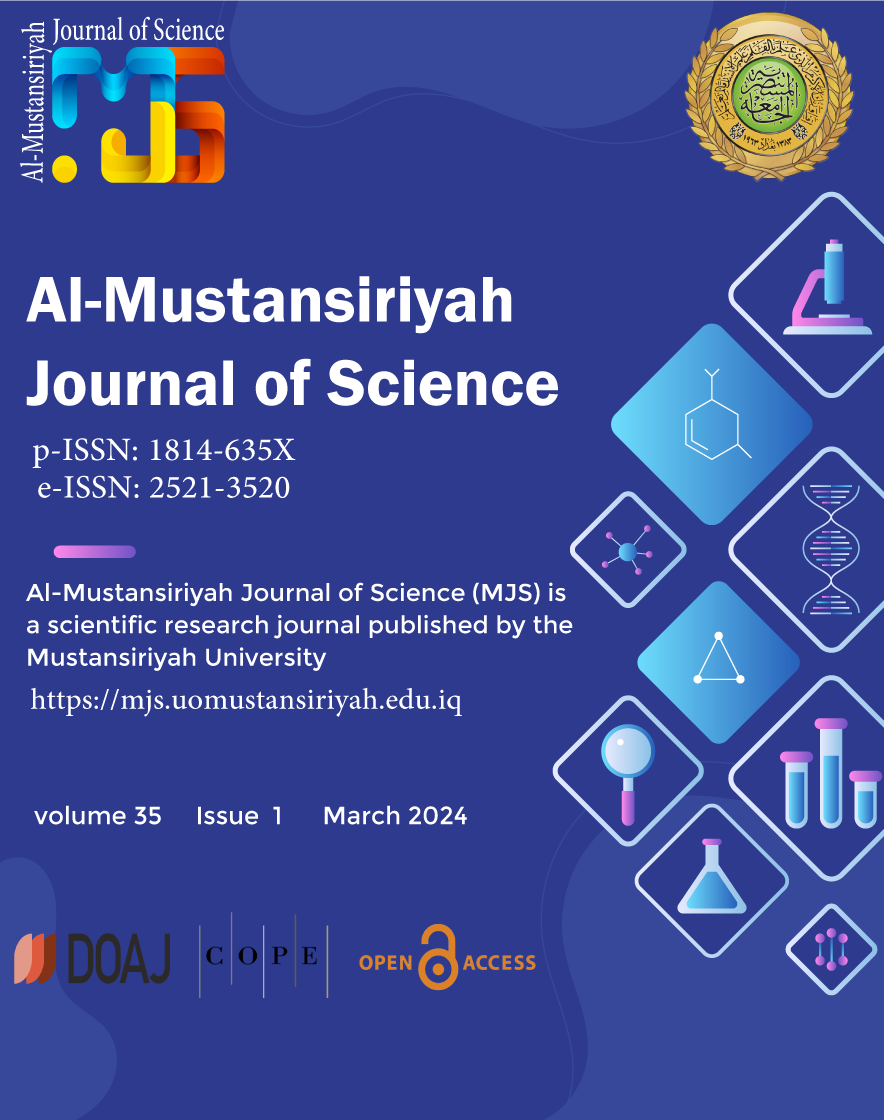Enhancing Meditation Techniques and Insights Using Feature Analysis of Electroencephalography (EEG)
DOI:
https://doi.org/10.23851/mjs.v35i1.1457Keywords:
Brain-Computer Interfaces (BCIs), electroencephalography (EEG), IoTAbstract
Through a Bluetooth connection between the Muse 2 device and the meditation app, leveraging IoT capabilities. The methodology encompasses data collection, preprocessing, feature extraction, and model training, all while utilizing Internet of Things (IoT) functionalities. The Muse 2 device records EEG data from multiple electrodes, which is then processed and analyzed within a mobile meditation platform. Preprocessing steps involve eliminating redundant columns, handling missing data, normalizing, and filtering, making use of IoT-enabled techniques. Feature extraction is carried out on EEG signals, utilizing statistical measures such as mean, standard deviation, and entropy. Three different models, including Support Vector Machine (SVM), Random Forest, and Multi-Layer Perceptron (MLP), are trained using the preprocessed data, incorporating Internet of Things (IoT) based methodologies. Model performance is assessed using metrics like accuracy, precision, recall, and F1-score, highlighting the effectiveness of IoT-driven techniques. Notably, the MLP and Random Forest models demonstrate remarkable accuracy and precision, underlining the potential of this IoT-integrated approach. Specifically, the three models achieved high accuracies, with Random Forest leading at 0.999, followed by SVM at 0.959 and MLP at 0.99. This study not only contributes to the field of brain-computer interfaces and assistive technologies but also showcases a viable method to seamlessly integrate the Muse 2 device into meditation practices, promoting self-awareness and mindfulness with the added power of IoT technology.
Downloads
References
M. F. Mridha, S. C. Das, M. M. Kabir, A. A. Lima, M. R. Islam, and Y. Watanobe, "Brain-computer interface: Advancement and challenges," Sensors, vol. 21, no. 17, p. 5746, 2021.
A. Kawala-Sterniuk et al., "Summary of over fifty years with brain-computer interfaces-a review," Brain Sciences, vol. 11, no. 1, p. 43, 2021.
A. S. Abdulbaqi, A. A. Abdulhameed, and A. J. Obaid, "A secure ECG signal transmission for heart disease diagnosis," International Journal of Nonlinear Analysis Applications, vol. 12, no. 2, pp. 1353-1370, 2021.
Y. Perwej, K. Haq, F. Parwej, M. Mumdouh, and M. Hassan, "The internet of things (IoT) and its application domains," International Journal of Computer Applications, vol. 975, no. 8887, p. 182, 2019.
C. Fang, B. He, Y. Wang, J. Cao, and S. Gao, "EMG-centered multisensory based technologies for pattern recognition in rehabilitation: state of the art and challenges," Biosensors, vol. 10, no. 8, p. 85, 2020.
A. S. Abdulbaqia, A. A. Abdulhameed, and A. J. Obaid, "Cardiopathy symptoms diagnosis based on a secure real-time ECG signal transmission," Webology, vol. 18, no. 5, 2021.
D. Tracey, "A holistic architecture using peer to peer (P2P) protocols for the internet of things and wireless sensor networks," PhD. Thesis, University College Cork, 2020.
S. Park, H.-S. Cha, and C.-H. Im, "Development of an online home appliance control system using augmented reality and an SSVEP-based brain-computer interface," IEEE Access, vol. 7, pp. 163604-163614, 2019.
V. Sharath, "Bci-iot," International Journal of Innovations in Engineering Research Technology, pp. 4-7.
M. Ullah et al., "Providing facilities in health care via brain-computer interface and Internet of Things," in 2020 43rd International Convention on Information, Communication and Electronic Technology (MIPRO), 2020, pp. 971-976: IEEE.
X. Gao, Y. Wang, X. Chen, and S. Gao, "Interface, interaction, and intelligence in generalized brain-computer interfaces," Trends in cognitive sciences, vol. 25, no. 8, pp. 671-684, 2021.
A. E. Hramov, V. A. Maksimenko, and A. N. Pisarchik, "Physical principles of brain-computer interfaces and their applications for rehabilitation, robotics and control of human brain states," Physics Reports, vol. 918, pp. 1-133, 2021.
S. N. Flesher et al., "A brain-computer interface that evokes tactile sensations improves robotic arm control," Science, vol. 372, no. 6544, pp. 831-836, 2021.
S. Ahamad, "System Architecture for Brain-Computer Interface based on Machine Learning and Internet of Things," International Journal of Advanced Computer Science Applications, vol. 13, no. 3, 2022.
P. Schembri, R. Anthony, and M. Pelc, "Detection of Electroencephalography Artefacts using Low Fidelity Equipment," in PhyCS, 2017, pp. 65-75.
M. T. Knierim, C. Berger, and P. Reali. "Open-source concealed EEG data collection for Brain-computer-interfaces-neural observation through OpenBCI amplifiers with around-the-ear cEEGrid electrodes." Brain-Computer Interfaces 8.4 (2021): 161-179.â€
H. Hunkin, D. L. King, and I. T. Zajac, "Evaluating the feasibility of a consumerâ€grade wearable EEG headband to aid assessment of state and trait mindfulness," Journal of Clinical Psychology, vol. 77, no. 11, pp. 2559-2575, 2021.
S. A. Mansi, I. Pigliautile, M. Arnesano, and A. L. Pisello, "A novel methodology for human thermal comfort decoding via physiological signals measurement and analysis," Building Environment, vol. 222, p. 109385, 2022.
V. Patel, A. Chesmore, C. M. Legner, and S. Pandey, "Trends in workplace wearable technologies and connectedâ€worker solutions for nextâ€generation occupational safety, health, and productivity," Advanced Intelligent Systems, vol. 4, no. 1, p. 2100099, 2022.
A. Haruvi, R. Kopito, N. Brande-Eilat, S. Kalev, E. Kay, and D. Furman, "Differences in the effects on human focus of music playlists and personalized soundscapes, as measured by brain signals," Biorxiv, p. 2021.04. 02.438269, 2021.
P. Sawangjai, S. Hompoonsup, P. Leelaarporn, S. Kongwudhikunakorn, and T. Wilaiprasitporn, "Consumer grade EEG measuring sensors as research tools: A review," IEEE Sensors Journal, vol. 20, no. 8, pp. 3996-4024, 2019.
C. A. Fontanillo Lopez, G. Li, and D. Zhang, "Beyond technologies of electroencephalography-based brain-computer interfaces: a systematic review from commercial and ethical aspects," Frontiers in Neuroscience, vol. 14, p. 611130, 2020.
Downloads
Key Dates
Received
Revised
Accepted
Published
Issue
Section
License
Copyright (c) 2024 Al-Mustansiriyah Journal of Science

This work is licensed under a Creative Commons Attribution-NonCommercial 4.0 International License.
(Starting May 5, 2024) Authors retain copyright and grant the journal right of first publication with the work simultaneously licensed under a Creative Commons Attribution (CC-BY) 4.0 License that allows others to share the work with an acknowledgement of the work’s authorship and initial publication in this journal.






















